PROJECT LAXFORD
Working in Partnership to Restore a Salmon Catchment

Goal 3: Design and conduct a catchment audit and roll out a suite of restoration solutions on each of the Core Rivers, using salmon restoration as the driver to achieve wider biodiversity and climate goals.
Goal 5: Create catchment partnerships to share successful solutions, supporting others to implement them in their own river catchments.
The Atlantic Salmon Trust is working in partnership with Grosvenor’s Reay Forest Estate across the River Laxford catchment in the far northwest of Scotland to deliver management actions to support the restoration of salmon and sea trout populations.
This dynamic 10-year project aims to better understand the River Laxford catchment and then to restore its wild Atlantic salmon and sea trout by improving the quality and habitat of the river and surrounding landscape. This is salmon restoration at a landscape level and represents our commitment to put science into action.
Why Laxford?
The River Laxford is one of the most remote, yet productive, rivers in the Scottish Highlands, but in recent years its salmon and sea trout populations have seen a significant decline, mirroring what has been happening throughout the species’ range. Because the entire river is located within Grosvenor’s Reay Forest Estate, the Laxford was perfectly suited to be our first ‘Core River’ – a testbed for management strategies and salmon restoration efforts at a catchment-wide scale. That ability to take a whole-catchment approach presented us with an enormous opportunity, and we hope that the lessons we learn here will be able to benefit salmon rivers everywhere.

Aims of the Project
By delivering this 10-year project, one of the largest catchment-wide restoration projects in the UK, we hope to restore 118km2 of the landscape and plant up to a million trees, enhancing biodiversity and benefitting the whole ecosystem, enabling wild Atlantic salmon and sea trout to thrive. The scheme is the our first catchment-scale restoration project, with efforts including the whole river from source to sea.
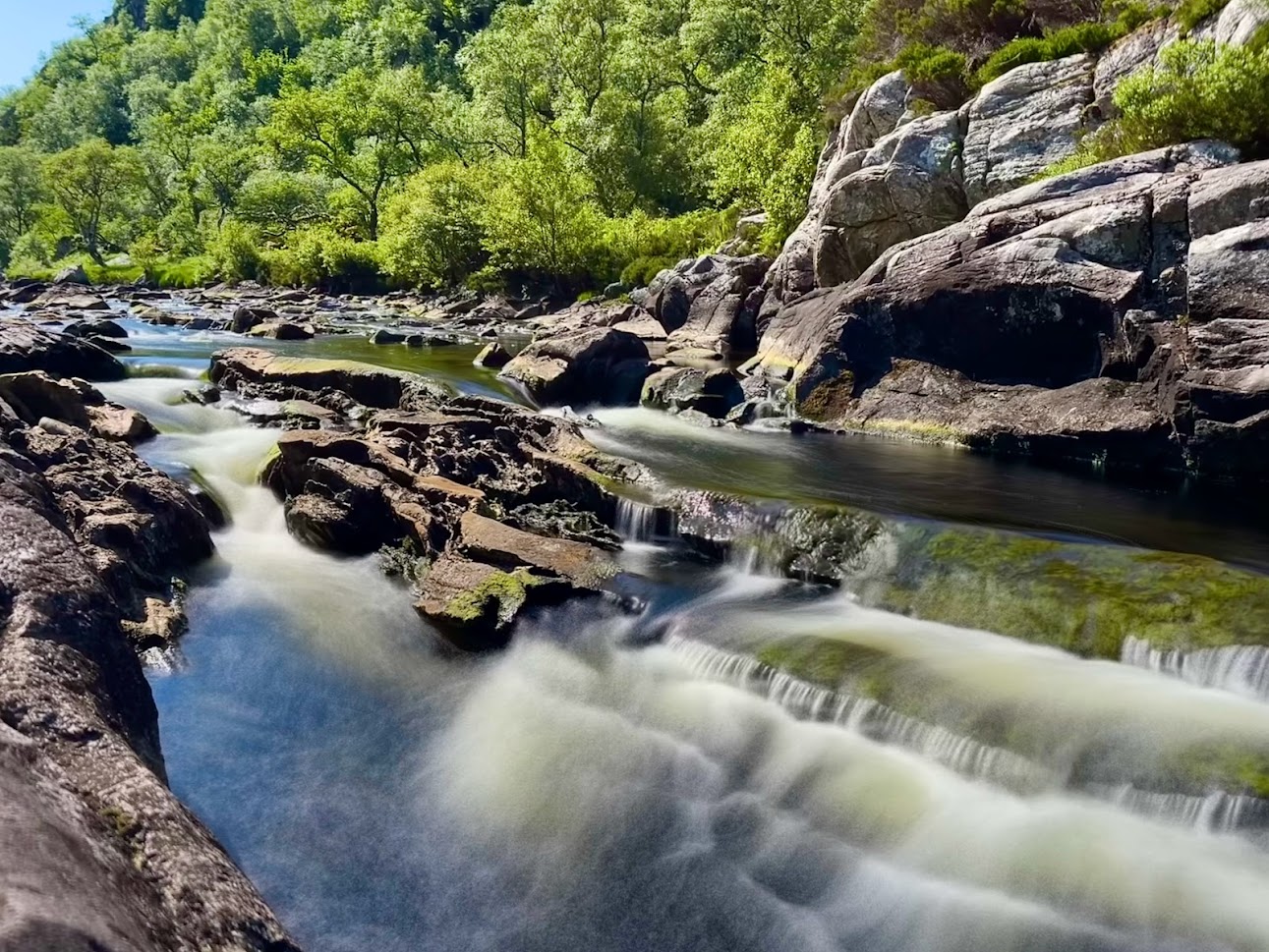
We aim to be an exemplar for catchment-scale salmon restoration, with the knowledge gained benefiting other river systems throughout the world.
What Makes the Project Unique? – A New Index River for Scotland
Grounded by sound science and monitoring, this work proposes to establish the Laxford as an index river and support the development of more similarly designated rivers in Scotland – forming a system that provides an indication of marine survival, fish populations and, critically, how they respond to our restoration efforts in the catchment.
Linking with a network of similar rivers across Europe and North America, ranging from the south of England to the northeast coast of Iceland, the index river network aims to provide valuable information and lessons for river managers and policymakers everywhere.

An Ecosystem Approach
While the wild Atlantic salmon is the focus of this initiative, no single species can be managed in isolation. The health of our salmon populations is heavily influenced by processes taking place throughout the wider catchment. Taking an ecosystem approach to wild Atlantic salmon and sea trout restoration by naturalising and balancing their environment, will benefit not only the fish, but also enhance wider biodiversity across the catchment. This approach will require us to address the complex set of relationships and interdependencies in the riverside areas and throughout the wider landscape.
”Taking an ecosystem
approach to wild Atlantic
salmon and sea trout
restoration, naturalising
and balancing their
environment, will
benefit not only the fish,
but also enhance the
wider biodiversity
across the catchment.”
Chris Conroy, Technical Project Manager for Project Laxford
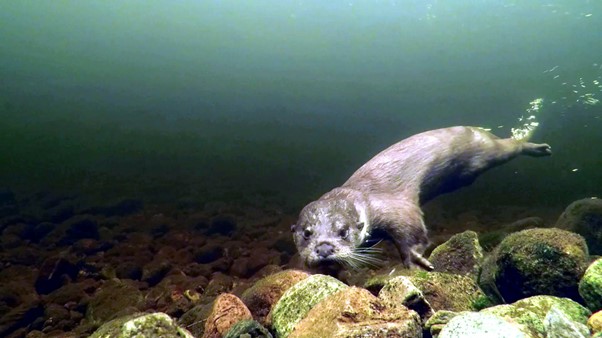
First Step – Catchment Audit
The first step in the process was to complete a catchment audit to better understand the Laxford’s current condition, capacity to support salmon and trout and the key factors limiting production, informing where to prioritise restoration efforts and management actions for the greatest effect.
The catchment audit used existing information to identify and assess key pressures limiting salmon and sea trout production. These are grouped into 12 themes based on the Freshwater Pressures Tool developed by the Marine Directorate and Fisheries Management Scotland. The key pressures identified in the Laxford catchment audit can be summarised as:
Loss of Riparian Woodland
The loss of native riparian (riverside) vegetation is arguably the key freshwater factor influencing the status of salmon and sea trout populations in the Laxford catchment. The leaves on trees provide shade during the summer months, help to cool the water and reduce thermal stresses on the fish. Tree roots help to strengthen banks and provide shelter. Falling twigs, leaves and insects provide an important food source and larger woody debris, such as fallen logs and branches help to shape the river channel.
Historical Channel Realignment
There is evidence of a historical realignment in of the river channel. Subject to a detailed feasibility study, we believe that restoring the original river channel could increase the available spawning and nursery habitat in the lower river by approximately 30%.
Barriers to Migration
There are a number of barriers to fish migration across the Laxford catchment which may be impeding fish access.
Fish Health
Wild Atlantic salmon and sea trout are susceptible to a wide range of diseases, whether viruses, bacteria, fungi or parasites, which occur naturally in the environment and that have the potential to be exacerbated by the aquaculture industry.
Gene Pool
Due to the prevalence and distribution of fish farming in the region, wild Atlantic salmon populations in the Laxford catchment are considered to be at risk from the negative impacts of breeding with escaped farmed fish. This would have the potential to impact upon the genetic fitness of the local population.
Predation
Anecdotal evidence suggests that harbour seals penetrate the lower reaches of the system throughout the year to feed on salmon and sea trout. Significant numbers of goosanders, mergansers and cormorants inhabit the Laxford catchment predating on juvenile fish and impacting salmon and sea trout production.
Other Pressures
Other pressures include the impact of invasive and non-native species (including fish, American mink and plants), development of offshore renewable energy sources, potential local expansion of fin fish aquaculture, pelagic fisheries, exploitation, historical stocking operations and sedimentation.

How It Works – One of Scotland’s Largest Fish Monitoring Systems
The effectiveness of our management actions will be assessed over time using robust science and the latest monitoring techniques. Funded by the Marine Directorate, we have installed one of the largest fish telemetry systems in Scotland. This will enable an ‘adaptive’ approach to the management of the catchment facilitating flexible decision making as the outcomes from our actions are better understood.
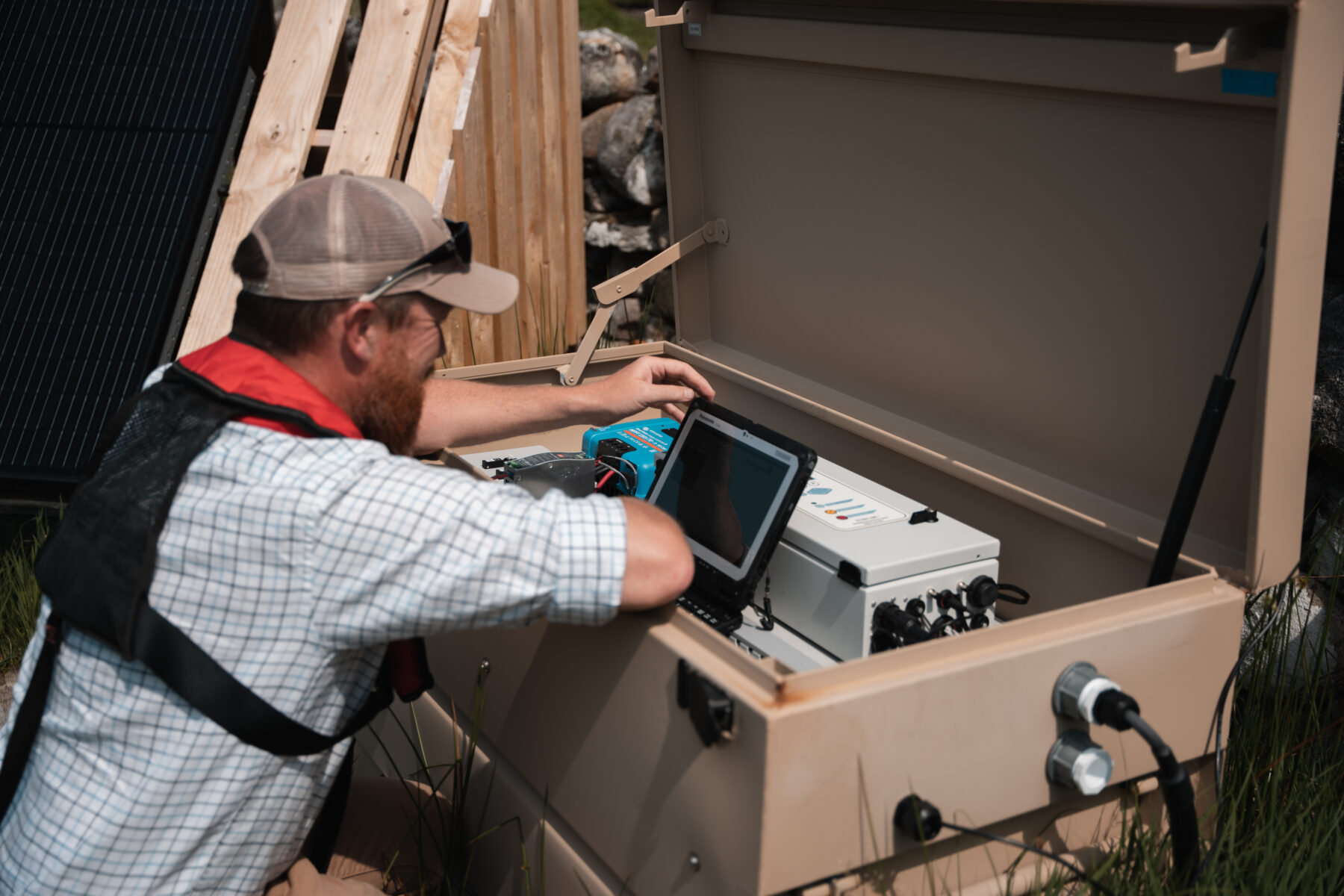

Passive Integrated Transponder (PIT) Tagging Programme
Four Passive Integrated Transponder (PIT) tag arrays have been installed at strategic locations within the catchment. This state-of-the-art fish tracking equipment is helping to build a detailed picture of the timing, speed and direction of movement of young salmon within the catchment – invaluable information which will help us to better protect these iconic fish.
A PIT tag is a small, pill-shaped cylinder of glass (about the size of a grain of rice) that houses a radio transponder with a unique code, which is carefully inserted into a fish. They don’t require a battery and so stay with a fish for its entire life. So far we’ve tagged, measured and weighed more than 1,400 young salmon ‘parr’ – which will help to determine whether shape, size, sex or origin of the fish within the catchment has a bearing on their survival. Going forwards we’re aiming to sample and tag up to 2,000 in September and October each year.
In the coming years, we should see these fish returning as adults and registering on our system, helping us to better understand the population dynamic and how it responds to our restoration efforts.


ARIS – A State-Of-The-Art Fish Counter
We’ve deployed an Adaptive Resolution Imaging Software (ARIS) fish counter, which uses high definition sonar to record images of passing fish. This sophisticated technology will provide an accurate count of the total number and average sizes of adult salmon and sea trout, or ‘spawners’, returning to the river each year. Coupled with information relating to sex ratios, this will allow us to monitor egg deposition and how this changes over time.
The short video clip below is illustrative of how the ARIS counter records passing fish.
Environmental DNA (eDNA)
Analysis of environmental DNA (eDNA) has become a cost-effective way of identifying species present in a target location or habitat. By analysing the eDNA present in water samples, we can determine the presence of fish, other vertebrates and invertebrate species at key sampling locations. This technique will also allow us to look at food availability for juvenile salmon and trout, as well as help towards our wider biodiversity goals.
Temperature Loggers
In addition, a series of 14 automated temperature loggers will record the water temperature every 15 minutes at strategic locations across the catchment to monitor the impact of temperature on fish populations.
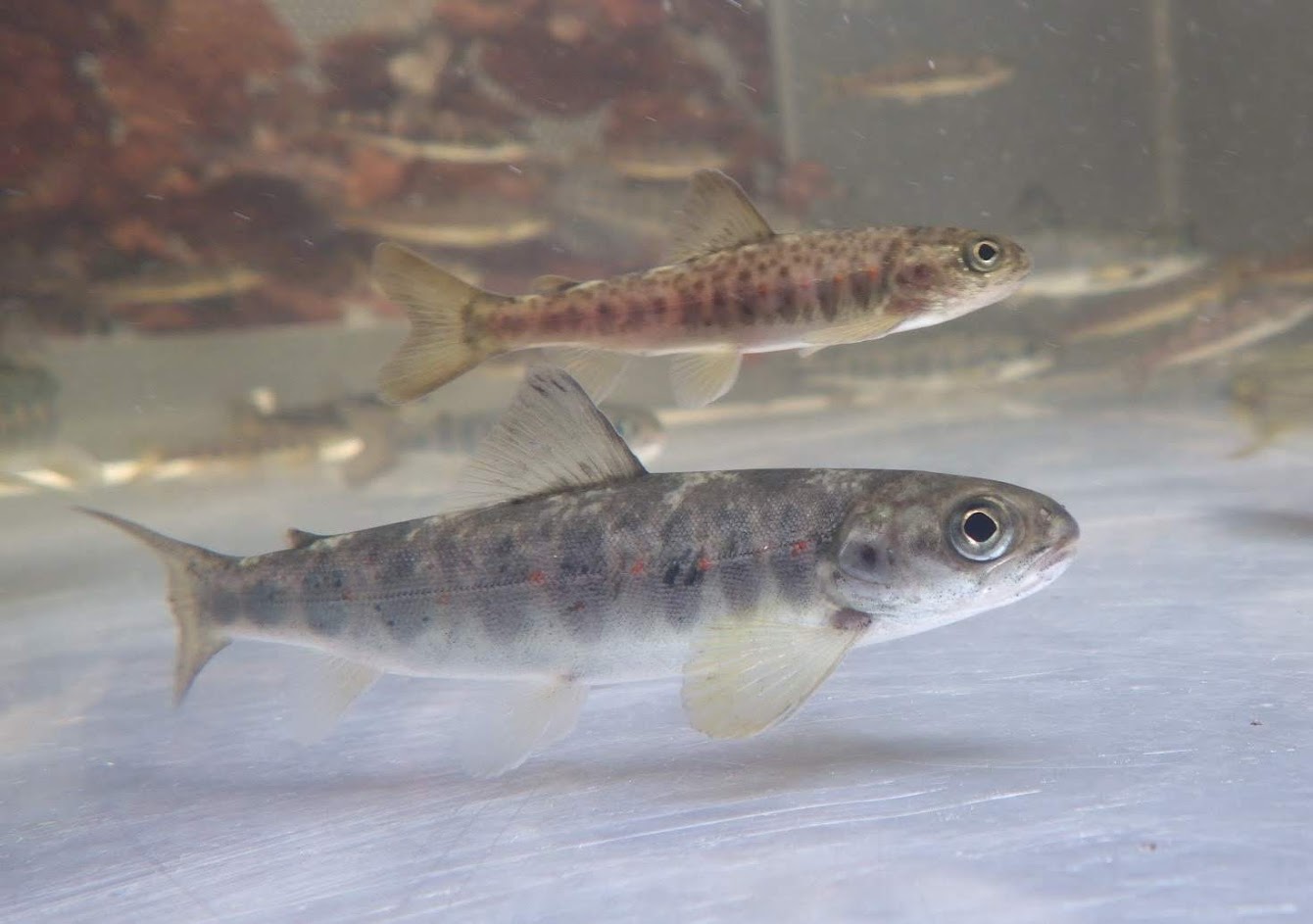
What Now? – Our Key Interventions
Informed by the catchment audit completed in 2023, detailed habitat restorations plans, continually assessing the impact of any interventions and in-keeping with environmental designations, our restoration strategy is focussed on four key interventions.
1. Ongoing Reduction of Grazing Pressure
Woodland regeneration, one of our major goals, is limited by deer grazing pressure. The deer eat and trample young trees and other vegetation, stopping them from growing and impacting the wider habitat. Enhanced and evidence-based deer management across the Laxford catchment area will allow us to establish sustainable deer densities. The resulting reduction in grazing pressure will allow catchment-wide biodiversity benefits to be realised.
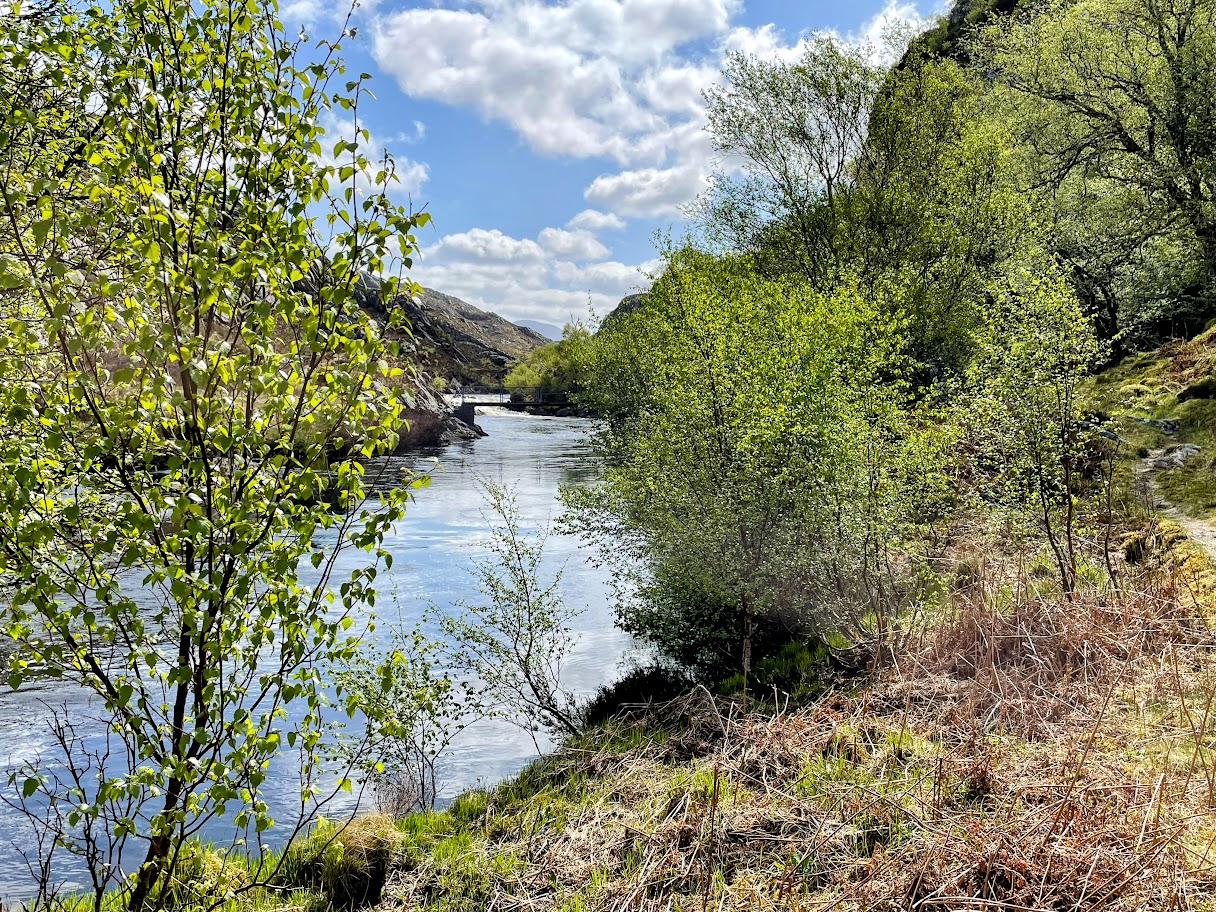

2. Restoring Native Riverside Woodland
The key to restoring the habitat within the Laxford catchment will be re-establishing native riverside woodland. We’re aiming to plant up to a million trees near to rivers, burns and streams. In the longer-term, natural regeneration will occur across a wide range of habitat types within new restoration enclosures.
Our riparian woodland and habitat restoration plans are centred on three large enclosures, areas which will be fenced off across the catchment, covering a total area of over 25km2 – approximately a quarter of the entire catchment. Over a period of about 50 years, the woodland and wider habitats within these protected areas will naturally recover as deer grazing pressure is removed. This will enhance biodiversity across the catchment, benefiting a wide range of species and habitats including breeding birds, blanket bog, sub-alpine heaths and montane acid grasslands.
3. Woody Debris
The strategic placement of large woody structures, such as fallen trees, roots and branches, which under natural conditions are delivered into the river system via erosion or windblown trees, provides a refuge for juvenile salmon. Debris from trees helps to deposit essential nutrients into the water creating a habitat for algae and aquatic insects, boosting biodiversity and providing a vital food source for young fish. In the longer term, the restoration of native riparian woodland in priority areas will provide a source of natural woody debris, but right now we can help to kick-start that process.
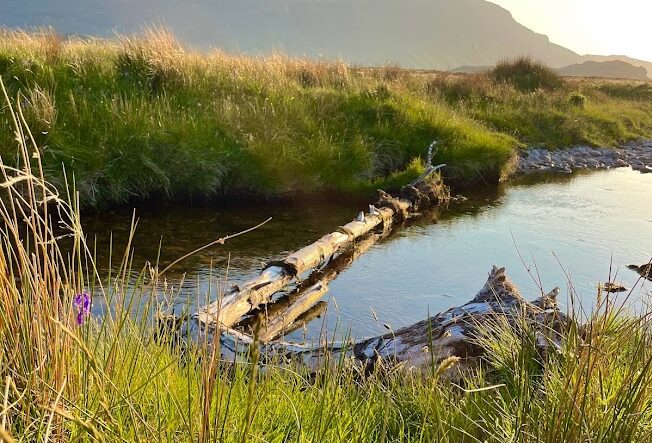

4. Reconnecting a Historical River Channel
We believe the Lone burn, a tributary to the Laxford, was realigned in 1888. We estimate that restoring the original river channel could increase the available spawning and nursery habitat in the lower river by approximately 250m providing a 30% increase on the existing 800m of accessible habitat.

Project Laxford Partners
Project Laxford is a partnership project between Grosvenor and the Atlantic Salmon Trust, and is also supported by the Marine Directorate and the West Sutherland Fisheries Trust.

